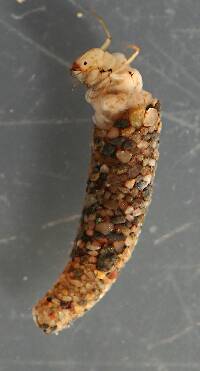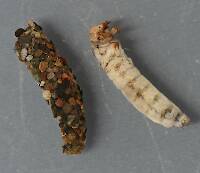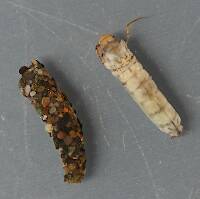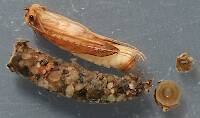
Hex Mayflies
Hexagenia limbata
The famous nocturnal Hex hatch of the Midwest (and a few other lucky locations) stirs to the surface mythically large brown trout that only touch streamers for the rest of the year.
Featured on the forum

This one pretty clearly keys to Kogotus, but it also looks fairly different from specimens I caught in the same creek about a month later in the year. With only one species of the genus known in Washington, I'm not sure about the answer to this ID.

Troutnut is a project started in 2003 by salmonid ecologist Jason "Troutnut" Neuswanger to help anglers and
fly tyers unabashedly embrace the entomological side of the sport. Learn more about Troutnut or
support the project for an enhanced experience here.
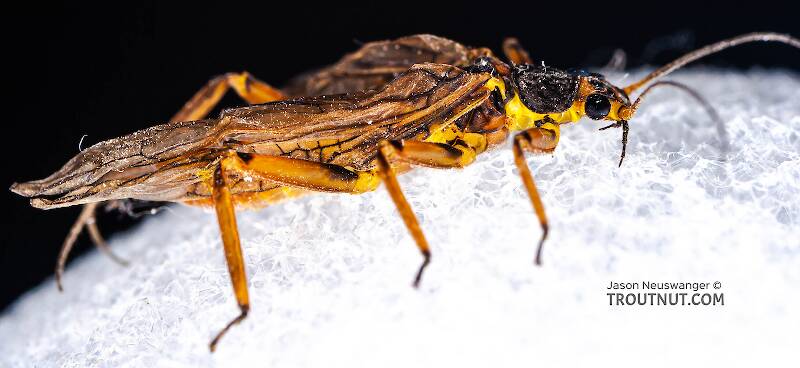
This stonefly emerged in my aquarium, and unfortunately I severely damaged its wings just trying to catch it. It's still an interesting specimen, especially since I was able to also photograph the nymphal shuck it emerged from. I was surprised by just how light it was shortly after emerging. I photographed it a couple days later when it had darkened considerably; it was a pale, almost pastel yellow at first.
DOS on Mar 28, 2009March 28th, 2009, 6:27 pm EDT
I had plans to meet a few friends tonight at a local sports bar to watch the UFC fights, but as I got out of the shower, I found that a industrious capitata had hatched in my aquarium and managed to escape its mesh canopy and was mockingly buzzing the lights in my steamy bathroom. Well, several hours later and a six pack of Saranac Black and Tan, I'm still at home and have a question. On page 37 of Schwibert's Nymphs Volume II, he diagnoses the adult at 28mm. My specimen falls more than 10mm short. Is it possible I have misidentified this specimen or is it a simple case of size variation?
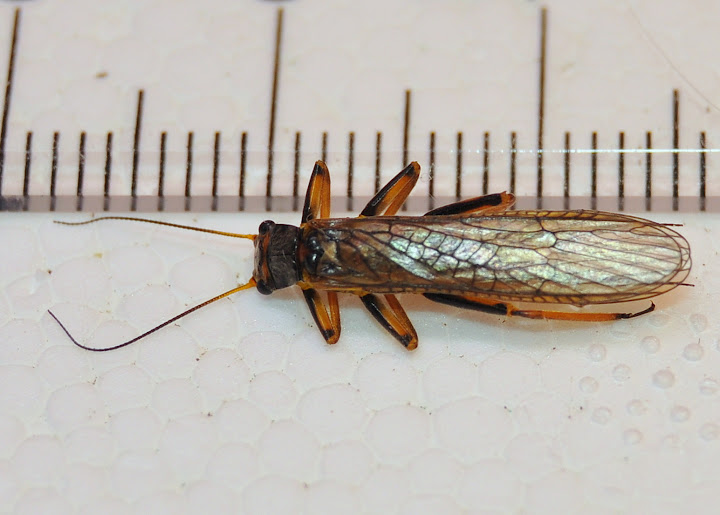
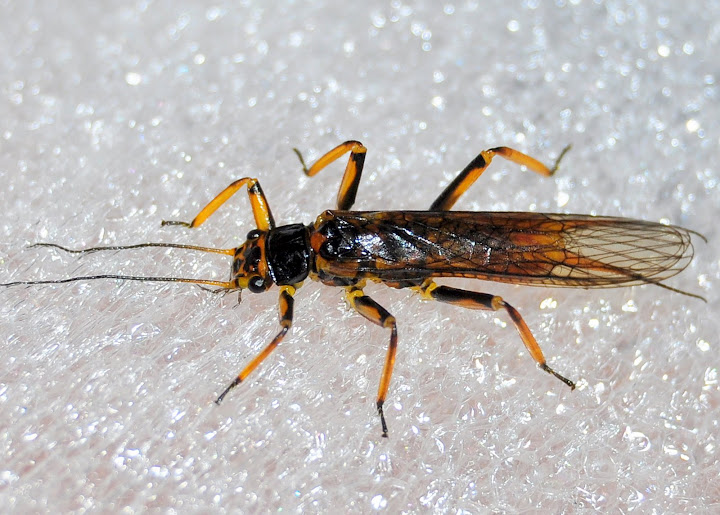
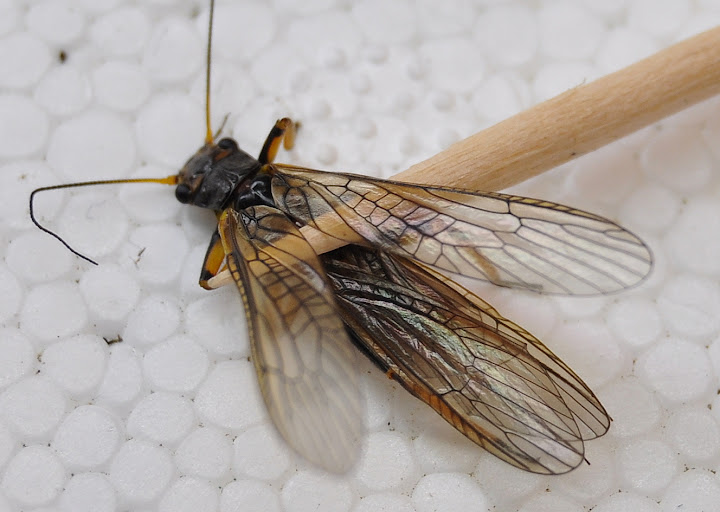
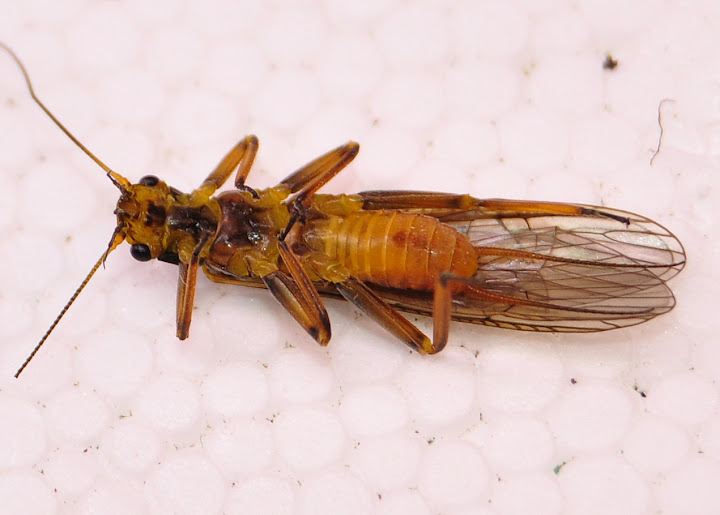
Andrew Nisbet
DOS on Mar 28, 2009March 28th, 2009, 6:46 pm EDT
ohhh ooooo with one more beer in me I have surmised that his measurements were from tip of antane to tip of caudal cerci.... might this be correct?? .... if that is the case my specimen is only about 2mm short
Andrew Nisbet
Taxon on Mar 28, 2009March 28th, 2009, 7:54 pm EDT
Andrew-
American Stoneflies: A Photographic Guide to the Plecoptera by Stark, Szezytko, and Nelson lists the length range of the (3) species of adult Agnetina as being (.7 – 1.3) in., which is (17.78 – 33.02) mm. Your specimen appears to be approximately 16.5 mm. I suspect that your aquarium environment delivered the degree days necessary for emergence in fewer calendar days than would have occurred in the nymph’s natural environment, and may therefore have somewhat reduced the adult length your specimen achieved.
American Stoneflies: A Photographic Guide to the Plecoptera by Stark, Szezytko, and Nelson lists the length range of the (3) species of adult Agnetina as being (.7 – 1.3) in., which is (17.78 – 33.02) mm. Your specimen appears to be approximately 16.5 mm. I suspect that your aquarium environment delivered the degree days necessary for emergence in fewer calendar days than would have occurred in the nymph’s natural environment, and may therefore have somewhat reduced the adult length your specimen achieved.
DOS on Mar 28, 2009March 28th, 2009, 11:21 pm EDT
Ahh thank you Roger,
That is the information I was looking for. I need to be more aware of the influence my aquarium has.
That is the information I was looking for. I need to be more aware of the influence my aquarium has.
Andrew Nisbet
GONZO on Mar 29, 2009March 29th, 2009, 3:06 am EDT
Drew, Agnetina capitata typically emerges in late May through June in much of our area. As Roger suggests, the warmer temperatures of your aquarium accelerated emergence. (Notice that Jason's specimen also emerged early from his aquarium and is very close to the size of your specimen.)
In addition, male stoneflies can be as much as 30% smaller than females. Male Agnetina adults have a very conspicuous pair of genital hooks extending from the rear on the dorsal side of the abdomen to the front of abdominal segment 8. You might want to check the gender of your specimen. (Cf. the third and fifth photos here: http://www.troutnut.com/specimen/685)
In addition, male stoneflies can be as much as 30% smaller than females. Male Agnetina adults have a very conspicuous pair of genital hooks extending from the rear on the dorsal side of the abdomen to the front of abdominal segment 8. You might want to check the gender of your specimen. (Cf. the third and fifth photos here: http://www.troutnut.com/specimen/685)
DOS on Mar 29, 2009March 29th, 2009, 7:40 am EDT
Hey now Lloyd, right on the money as usual...
I just happened to keep the specimen around. After a little wing dissection and a quick look under the stereo scope, I propped him up for a second photo shoot. Sure enough, genital hooks galore!
Also, as I was cleaning the aquarium today I found his brittle, vacant exoskeleton stuck to the backside of the filter where he sneakily thwarted my mesh canopy.
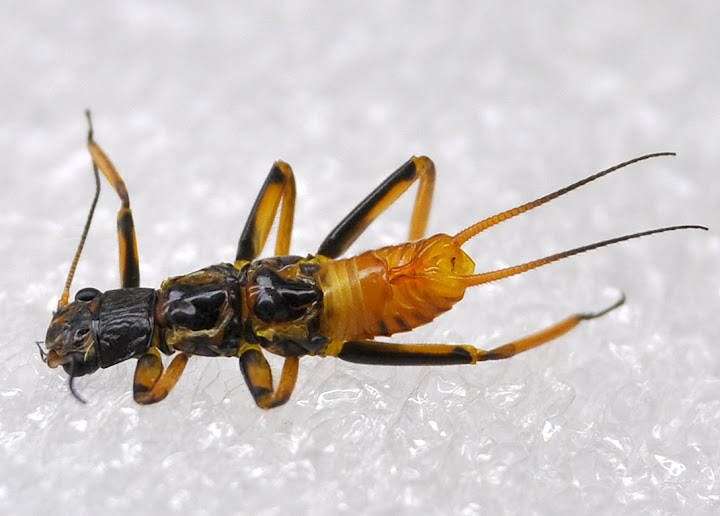
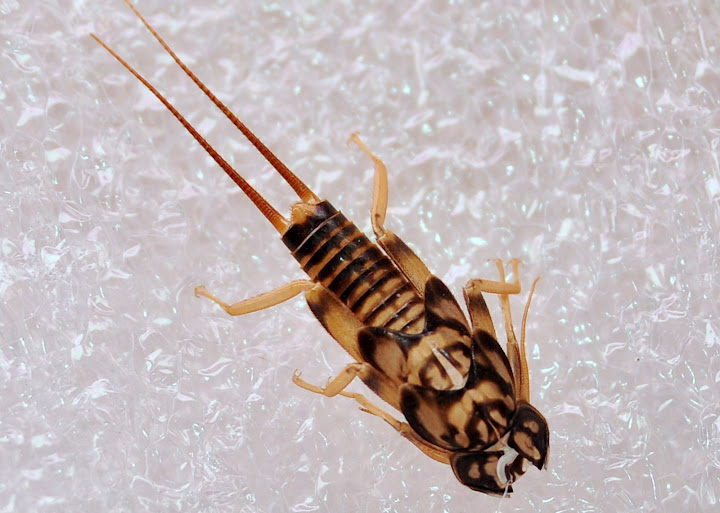
Thanks again Roger and Lloyd, the little tid-bits of information you shared with me are invaluable and I could not find in the several sources I checked.
I just happened to keep the specimen around. After a little wing dissection and a quick look under the stereo scope, I propped him up for a second photo shoot. Sure enough, genital hooks galore!
Also, as I was cleaning the aquarium today I found his brittle, vacant exoskeleton stuck to the backside of the filter where he sneakily thwarted my mesh canopy.
Thanks again Roger and Lloyd, the little tid-bits of information you shared with me are invaluable and I could not find in the several sources I checked.
Andrew Nisbet
GONZO on Mar 29, 2009March 29th, 2009, 8:14 am EDT
Great photos, Drew!
Quick Reply
Related Discussions
Topic
Replies
Last Reply
0
Aug 12, 2012
by Hdhungryman
by Hdhungryman
9
Jul 7, 2015
by Millcreek
by Millcreek



